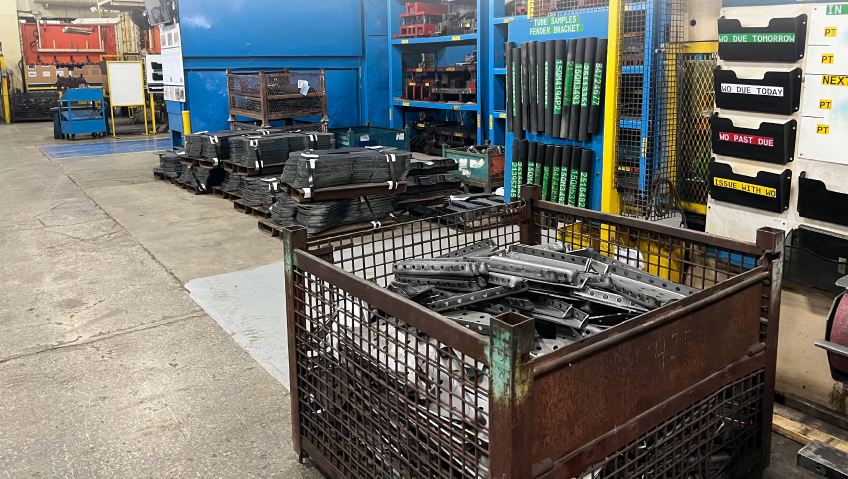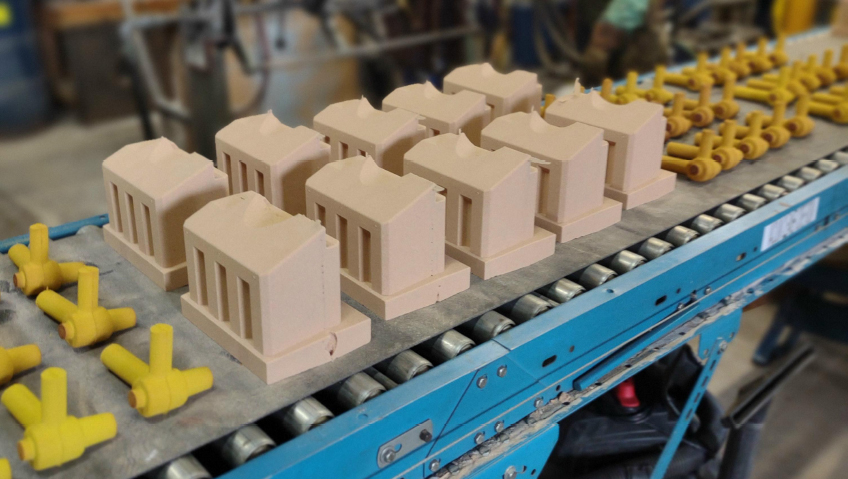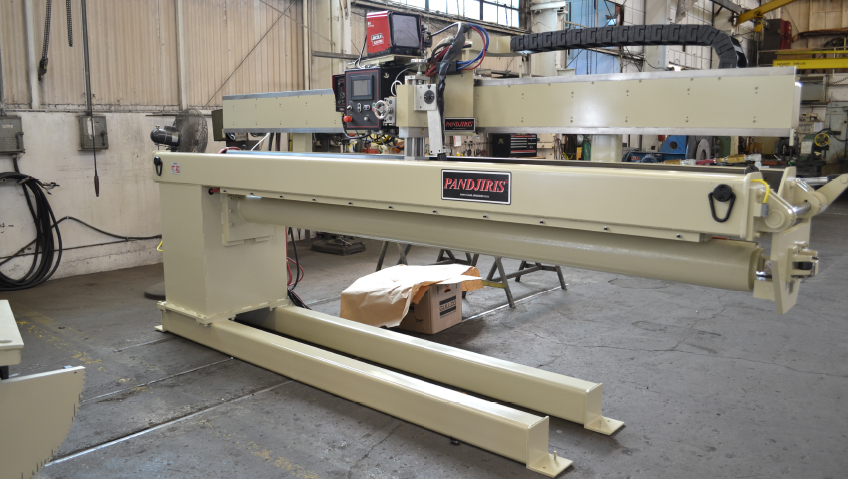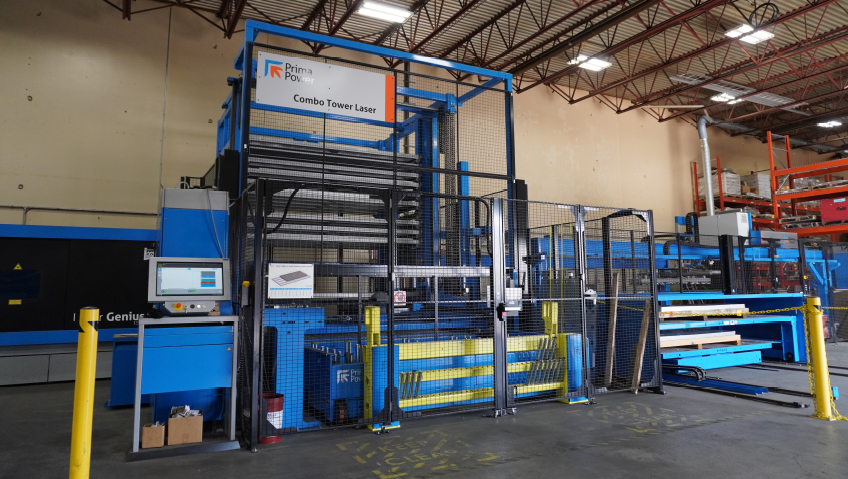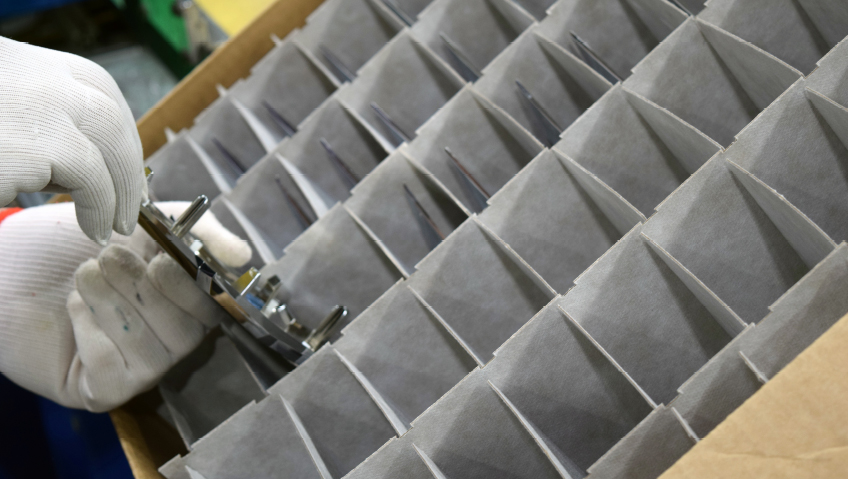Mancor Industries Inc. is well-respected by international manufacturing giants as a fabricator of precision-crafted metal components and sub-assemblies. From six facilities throughout the United States and Canada, the company performs expert metal cutting, forming, machining, welding, assembly, and painting.
Mancor’s success is tied to its custom software made by its sister company, OnRamp Solutions, and this elevates its overall performance into a whole new level of fabrication. One of the company’s most impressive skills is its ability to adapt to its partners’ needs in as little as a day, pivoting on real-time data capabilities and expert guidance provided by experienced professionals.
To achieve this symbiosis, OnRamp Solutions applies the knowledge gained from Mancor clients’ challenges and develops advanced software built to expand and add value to both companies’ offerings and client experience. OnRamp Solutions serves clients in mid-market fabrication and distribution with modern enterprise resource planning and e-business solutions involving engineer-to-order, make-to-order, and assemble-to-order processes.
OnRamp has always been eager to respond to client requests and can turn those around much faster. Ideas that come from the floor are sure to help improve the product.
OnRamp Solutions makes obtaining large amounts of complex information easy. Plus, when new solutions arrive, the rule is that they must solve issues for all its clients across several industries, not only for Mancor. This approach gives OnRamp Solutions powerful possibilities, driving improved profits for its clients by as much as twenty-five percent over a single year. The company does not just sell the software to clients; it also shows them how to use it to their best advantage, says Ian Church, Vice President of Development and Implementations.
Mancor continues to adhere to the four goals of its CEO, Art Church. At present, Art serves as the president of OnRamp Solutions and CEO of Mancor. His goals for the two companies include being the best, growth, safety, and having fun. As part of the commitment to being the best, speed and precision must combine. However, in the early days, none of the available software could hold up to the challenge.
No available software packages “are oriented to solve the problems the way they should. Because of my background, I decided to develop our software [with the idea] of selling it commercially. The real measure of a good system is that it should allow you to get better and better,” says Art. “We developed a system [using] Mancor as a test [lab], implementing it at all six of our plants. That’s the reason why we’re so successful,” he adds. The software brought growth, allowing him to launch it as an independent software firm in 2015.
As the premise for developing the software was to improve existing functionality while adding capabilities that other software packages did not have, Art went all out to create a suite like none other. “We went out of our way to enhance automated shipping. We run weekly financials in our company, [so] we automated the whole process. I have consolidated financials for all six plants for the previous week [on] Monday afternoon,” he says. The program also allows the company to operate with far fewer accounting professionals on staff than most other companies of its type and size.
“We have integrated several ideas [based on knowledge] that I have used for over forty years. We have a capacity planning system that allows management to [run a smooth operation]. It has allowed us to get on top of [overall] efficiency to see where our issues are and what we need to [improve],” he adds.
The software also extends to scaling-up fabrication shops. One great example of this is how it enhances existing automated laser cutting equipment with automation that can produce on-demand work orders. These orders come from material requirement planning systems that produce nesting order prompts. During nesting, the expert system arranges part patterns on material sheets, usually at night, to ensure optimal material usage and minimize waste. “What’s unique about this is that we can have one work order be across three or four nests. There’s just nothing out there that does that this way,” says Art.
In addition, a scheduling system is programmed according to the nests set to be laser cut. The schedule reflects on monitors across Mancor’s fabrication shop floors allowing everybody access to the information. Operators can also move on to the next nest without leaving the laser station, and programmers can update schedules without hassle. “This is a huge saving. We had a guy on fulltime nesting. He now only works two hours a day, doing this process and running another laser the rest of the time. The [physical labour] savings are great; our on-time delivery has gone up; efficiency goes up,” Church says.
The software also allows the fabrication team to automatically provide its metal depot with daily upcoming material needs which, in turn, ensures that the correct metal is delivered in the desired quantities when and where it is required with only one day lead time. Furthermore, the system allows truckloads to be planned according to the weight and volume of the materials so that vehicle capacity is maintained while supplying each facility’s daily metal needs. This meticulous organization, along with industry partnerships, keeps steel supply and manufacturing running smoothly throughout Mancor Industries Inc.’s plants.
“Again, this is stuff you don’t find in standard software. There are all kinds of things we can do to respond to our customer that makes us unique,” says Art. “Because we have our own, we can make it work the way it needs to work.”
Other functions include shop monitors fitted on all fabrication equipment reporting on output volumes, availability, and equipment effectiveness. It offers integrated statistical process controls, which chart the quality of machining and laser fabrication before parts even begin to take shape physically. It also displays any possible manufacturing issues that crop up, provides preventative maintenance prompts, and much more. Monitors even display setup and operation directions.
The benefits of the OnRamp Solutions software are also evident on the company’s wet and dry coating painting lines, reporting on everything from the volume of surfaces painted to the quantities of materials consumed. A visual density report allows significant improvements in the quality of work produced by its paint shops. The management system also provides sufficient data to support improving output capacity and processes without physical expansion, a brilliant achievement for both Mancor Industries Inc. and its clients.
Thanks to OnRamp Solutions, the entire Mancor Industries Inc. system is hosted onsite but Internet-based. This allows many of its employees to work remotely with easy access to everything they need, including real-time access to the monitors displayed on every piece of equipment across all its facilities. The software also reflects workforce diversity, prompting every screen to be translated into languages like Spanish simply by selecting the text and hitting a translation command.
Art started his career as an engineer, moved into industrial engineering at Timberjack Inc. followed by materials management for just over a quarter of a decade. He became the vice president of engineering for another three years in 1985, describing the company as a ‘complex, low volume’ operation. This position led to becoming chief executive officer of Champion Road Machinery at age thirty-five for nine years. After helping to turn that company around and facilitating a successful merger with another market leader, he moved to Mancor Industries Inc. as president and chief executive officer in 1998.
“What’s interesting is that my whole background has been in programming and manufacturing management. So I’m very aware and capable in terms of manufacturing systems. I know what’s good and bad,” he says. Growing Mancor from a $50 million operation to a $250 million operation in twenty years is most certainly proof enough of his skill and business acumen.
Due in part to good remuneration, select shareholding, and the ever-increasing possibilities they offer, the two companies enjoy low staff turnover. With Mancor using OnRamp Solutions ERP so well, staff members who do join other companies often recommend the software to their new employers. A better mark of excellence is hard to find. OnRamp Solutions’ nine staff members compared to Mancor Industries Inc.’s 900 employees shows that the software developer’s team packs a noteworthy punch. “It’s probably more functional than many of the big names in ERP. But we didn’t do it to beat the other guys; we did it to have Mancor do extremely well. As a result, even if I never sold another package I’d make money ahead of time because of the improvements it made to Mancor. It’s been that kind of success,” Art says.
Another flattering nod to OnRamp Solutions’ excellence arrived with a delegation sent from the European head office of a large and well-known international client. The company in question wanted to know how Mancor Industries Inc. achieved consistent precision that stands above other suppliers. The result is a significant push from the client’s side to accept increasingly higher volumes. While every one of its facilities is unique, the plant in question is OnRamp’s testing ground for new automation and workplace reconfiguration possibilities.
True to their shared values, the two companies will explore every avenue leading to growth without increasing their physical footprint for now. Reflecting on the future of OnRamp Solutions, the team is aiming at growing the company to three-hundred-plus customers while doubling Mancor Industries Inc.’s size over the next five years.

